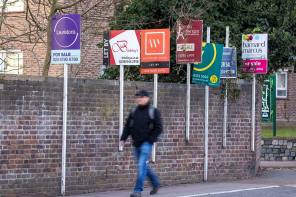

Despite rising costs, landlords could see net profits of more than £265,500 on their properties over 25 years, research has suggested.
One Savings Bank calculated the profit, which is £162,000 when inflation is taken into account, and suggested buy-to-let could therefore still be a good bet for investors, although the research showed higher-rate tax payers will generate nearly a quarter (24 per cent) less than basic-rate taxpayers.
Returns also vary significantly by region, with profits in London more than £307,000 over the period, far greater than the UK average.
John Eastgate, sales and marketing director of One Savings Bank, which carried out the research, said that with a 25-year investment, a basic tax paying landlord, placing a typical 3 per cent deposit of £73,908 on a property, would generate a total profit of £265,500 after all costs and taxes.
Accounting for the impact of inflation over the period, this represented a profit of £162,000 in today’s money, or £6,475 every year.
He said: "The buy-to-let market is undergoing a sea change.
"Regulatory and taxation changes have altered the market dynamic, reducing its attractiveness to amateur landlords, and increasing the tax bills of higher-rate investors. In spite of rising costs, there are still healthy returns to be found in property for committed investors.
"However the days of speculation are gone. It is a long-term business endeavour, requiring commitment and expertise.
"Investors must be prepared to undertake business and tax planning, understand the risks as well as the rewards, and, most importantly, the responsibilities they have towards their tenants."
The figures show that the cost of investing for 25-years amounts to £373,000, including more than £100,000 in tax.
A significant proportion of landlord returns over this period would come from capital gains, but the research suggested that most properties would also make a profit on rental income that more than covered outgoings.
The figures follow a sustained campaign by the government to reduce the attractiveness of buy-to-let investment, which has included increasing the amount of stamp duty payable on investment properties as well as decreasing the amount of tax relief available on mortgage interest payments.
As a result of the changes, investment into buy-to-let has dropped significantly in recent years with figures from the Intermediary Mortgage Lenders Association (Imla), in February, showing net investment in buy-to-let property fell from £25bn in 2015 to just £5bn in 2017 - a steeper drop than was seen immediately after the credit crunch in 2008.
Bob Riach, principal of Riach Financial in Scunthorpe, said that although interest had slowed down in the area, it still stacked up financially.
He said: "The average price of a buy-to-let here is about £120,000, with rental income of £550. It is viable, but the stamp duty surcharge has made it less popular."
rosie.murray-west@ft.com



